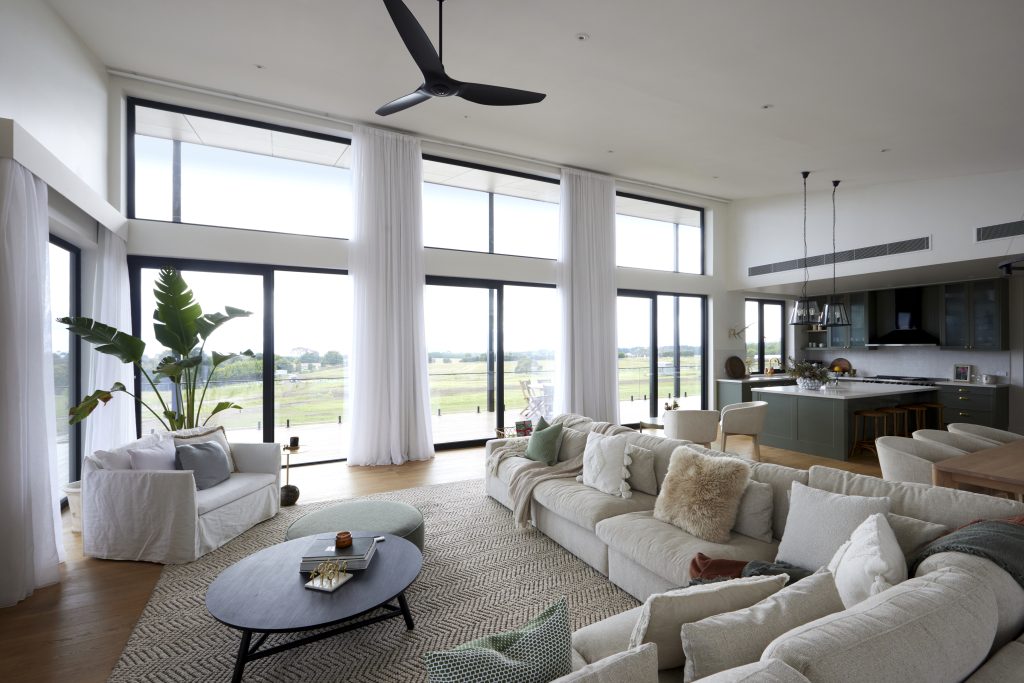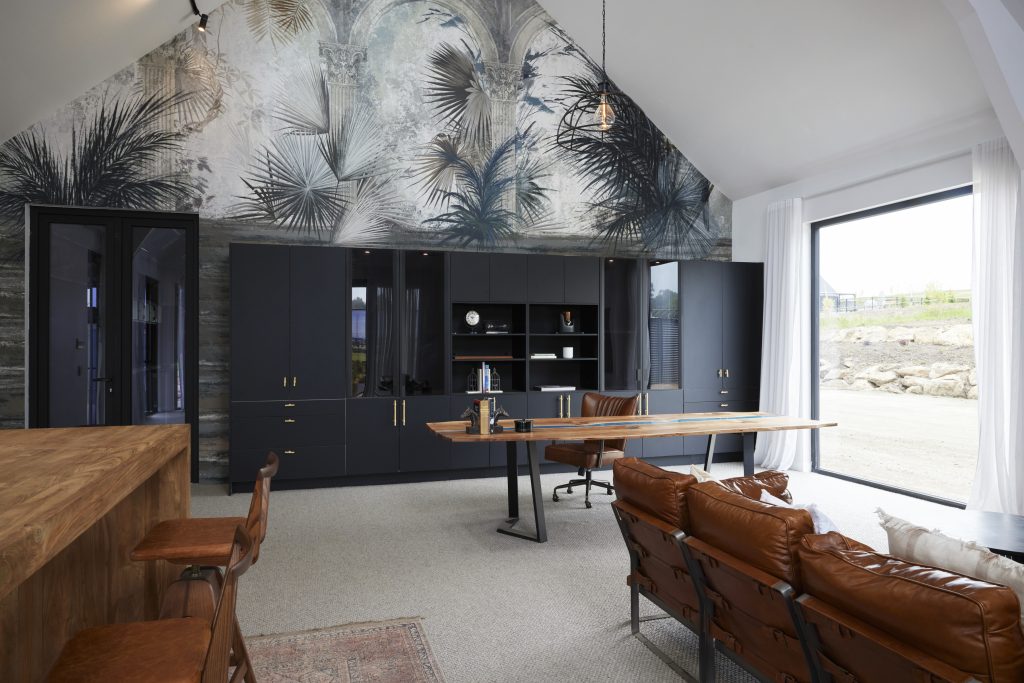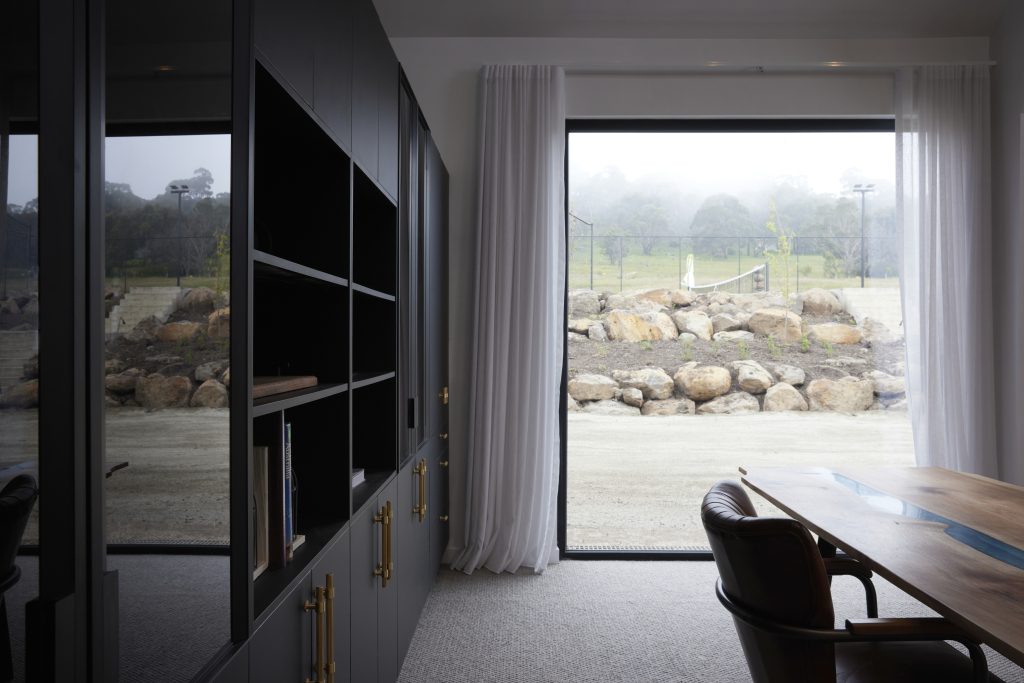How MVHR Works for Passive Houses

When it comes to building sustainable Passive Houses, an important consideration for architects, designers and owners is whether MVHR (Mechanical Ventilation with Heat Recovery) needs to be incorporated.
Read more: How MVHR Works for Passive HousesPassive Houses can be wonderful bastions of energy efficiency if they’re designed right, combining technology with design techniques that can significantly reduce a building’s energy consumption, lower their overall carbon footprint and simultaneously provide a high level of comfort as a dwelling!
Let’s take a deeper look at MVHR; how it works and how it can be integrated with Thermotek Windows and Doors for an airtight Passive House with excellent ventilation.
What is MVHR?
MVHR stands for Mechanical Ventilation with Heat Recovery. MVHR systems are used in structures to provide ventilation while also recovering heat from the outgoing air to preheat the incoming air.
Installed correctly, MVHR is an excellent way of improving energy efficiency, reducing heating costs and enabling excellent air quality.
How exactly does it work?
MVHR systems generally consist of a centralised unit that is connected via ductwork throughout the building.
These ducts are linked to a network of vents or grilles throughout the house, that then distribute the incoming and outgoing air.

How does MVHR help achieve Passive House design principles?
A Passive House minimises the amount of energy needed for heating and cooling, allowing the building envelope to do the work.
The Passivhaus Standard doesn’t specify mechanical ventilation; it instead requires that strict comfort and energy efficiency benchmarks be met. These can be achieved via a number of different methods. In most climates, meeting these benchmarks in the long term will require MVHR.
There are five key design principles that are generally adhered to when designing and building a Passive House:
- Airtightness
This is crucial. Passive Houses have an airtight building envelope. This means that there are very few gaps and cracks that allow air unregulated entry or egress. This gives total control over internal air quality.
At Thermotek, we offer affordable window systems such as the Eco Series 3000, which are designed to be airtight, with frames made from various fusion welded air chambers. This ensures a superior seal that optimises insulation, and the dual TPE (thermoplastic elastomer) seals further enhance thermal performance. - Insulation
Another important facet of a Passive House is its insulation. The walls, roof, and floors of a Passive House are all heavily insulated, typically using materials such as fibreglass, cellulose, or mineral wool. This insulation helps to keep the heat inside the building during the winter and out during the summer, reducing the need for heating and cooling.
Excellent insulation improves comfort and also reduces condensation by minimising cold surfaces. Insulation can also be achieved through window and door designs.
The gap between the two panes in Thermotek windows and doors is the principal source of insulation. This gap slows down thermal transfer by conduction, slowing down air circulation to reduce the amount of heat lost in winter and gained in summer.
In winter, when cold air hits the first windowpane of a Thermotek product, it doesn’t reach the inside environment. Instead, it reaches the gas or air between the panes. By the time it hits the second pane, it is no longer icy cold.
Thermotek windows and doors regulate your home’s temperature, drastically cutting the number of times your heating/cooling system must be used. - Negating Thermal Bridges
‘Thermal Bridges’ are areas in a home that suck heat and increase condensation risk. The insulation in a Passive House needs to be of a good thickness and continuous. This means keeping penetrations through the insulation – i.e., ‘Thermal Bridges’ – to a minimum.
Sometimes it’s necessary to cut through insulation for construction purposes. For Passive Houses, this should be done with materials like timber or thermally-broken aluminium, which are less conductive and minimise heat loss (unlike metals which are highly conductive). - High-Performance Windows
Like Thermotek sustainable windows, all windows in a Passive House should be double-glazed or triple-glazed, with thermally broken or non-metal frames. The size of the windows should also reflect the building envelope, to optimise solar radiation in summer and winter. - Mechanical Ventilation Heat Recovery (MVHR)
The inclusion of an MVHR means you don’t need to open your windows for good air quality, as the unit salvages heated and cooled air that would otherwise be wasted. It also filters the air that’s coming into the building.
While the insulation and airtightness of a Passive House keep the heat inside during the winter and out during the summer, there still needs to be a way to ventilate the building to provide fresh air and remove moisture. An airtight home needs fresh air for the comfort of inhabitants, otherwise, it will become stale.

Are there other benefits of installing an MVHR?
MVHR systems also have several other benefits aside from energy efficiency. For example, they can help to improve indoor air quality by removing pollutants and moisture, and they can also reduce the amount of condensation on the windows, which can help to prevent mould growth.
Additionally, MVHR systems can be controlled by the occupants, allowing them to adjust the ventilation rate to their own comfort level.
Is it possible to harness ‘natural ventilation’ only?
It is possible in relatively mild climates, without extremes of heat or cold. For Australia, it’s technically possible to use only natural ventilation by using Thermotek windows and doors and installing vents that are operated manually and provide summer ventilation.
However, it is likely that in most regions of Australia, occupants will want to regulate the amount of ventilation in high summer or mid-winter
This is where ‘mixed mode’ ventilation comes in. This means relying on natural ventilation such as manual vents or windows when the weather is mild. Then Mechanical Ventilation with Heat Recovery (MVHR) can be utilised when temperatures become very cold or hot.
The comfort of inhabitants is crucial for the long-term viability of a Passive House. It’s important that a comprehensive ventilation system is designed to ensure that the Passive House standard is met, and adequate fresh air is provided. Installing mechanical ventilation and enabling ‘mixed mode’ delivery helps achieve that level of comfort when the temperature exceeds a tolerable threshold.
Using MVHR in winter
Heat recovery in winter is a major benefit of MVHR, warming fresh air from the outside before it enters a room. It eliminates draughts and doesn’t mix stale air with fresh. Instead, it extracts heat and adds it to fresh air.
MVHR in an airtight building uses less energy to run than the heating energy it saves. The heat recovery process keeps between 75 – 90% of the heat inside the building instead of allowing it to escape through a natural ventilation system like a window.
An airtight building will stop heat from escaping but it is likely to be uncomfortable and eventually need more energy to combat the discomfort if adequate ventilation isn’t installed from the beginning.
MVHR provides adequate fresh air at a comfortable temperature and is highly energy efficient in an airtight building.

Optimise Ventilation With MVHR and Thermotek Windows
The airtight envelope and excellent insulation offered by Thermotek combine with the high air quality created by MVHR, to provide an extremely efficient and sustainable way to heat and cool buildings.
Thermotek windows and doors use advanced building materials and construction techniques to reduce energy consumption, while MVHR systems capture and reuse the heat that would otherwise be wasted, which further reduces energy consumption.
Together, they can help to significantly reduce a building’s carbon footprint and provide a comfortable living environment for the occupants.
Get to Know Thermotek
Thermotek is a sustainable, low-waste manufacturer, leading the Australian market with 100% recyclable products.
The initial costs of installing MVHR and sustainable Thermotek windows and doors are offset by the long-term savings on energy bills, and by the positive environmental impact. We offer a range of affordable, stylish systems to create a beautiful home.
Contact our dedicated team today and let’s start the journey towards your dream Passive House.

